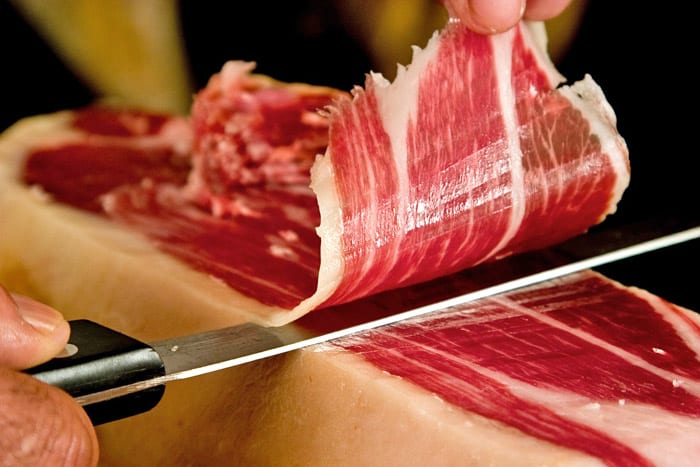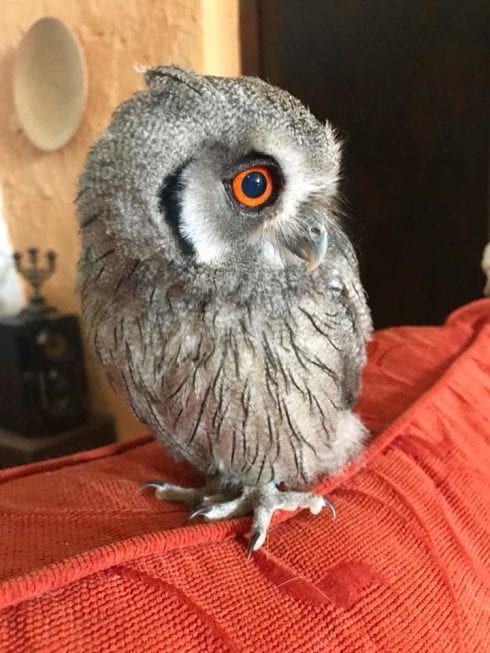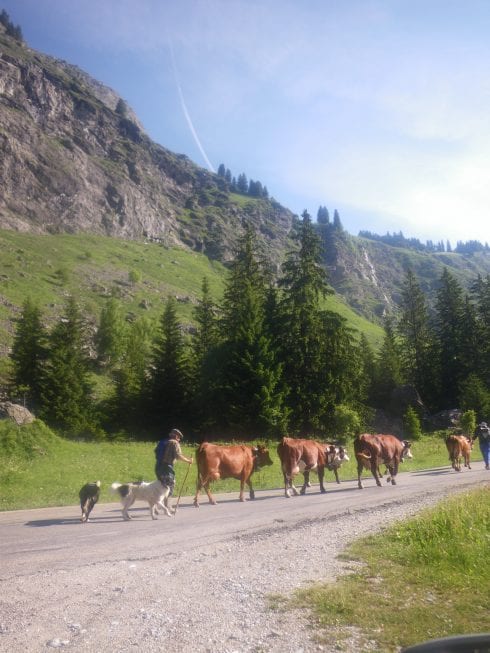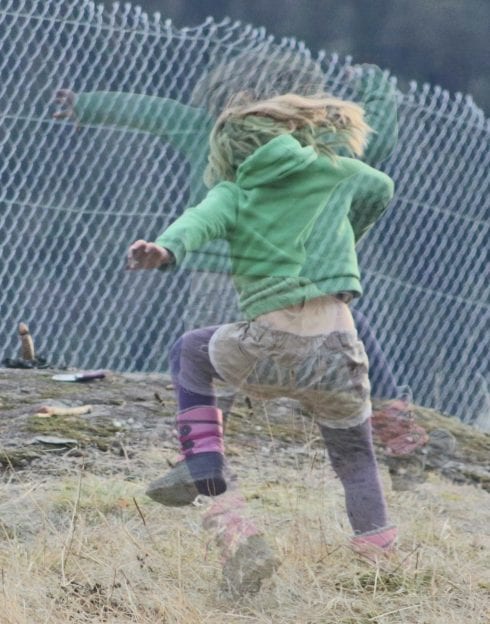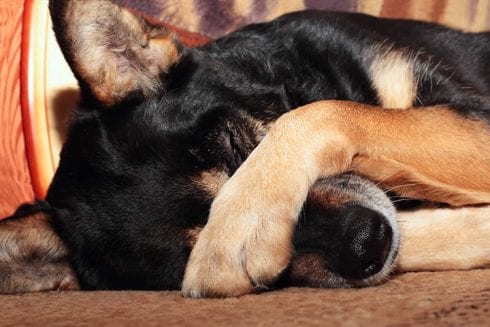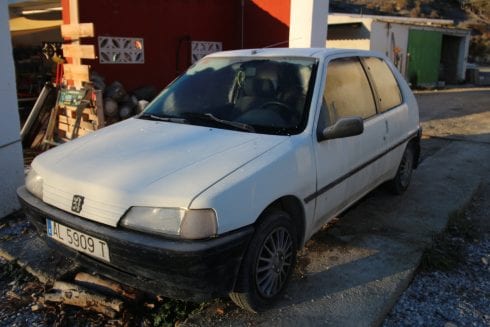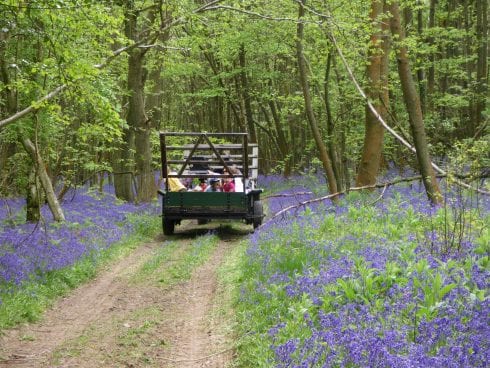
If you live in Andalucia you need to learn a few things in the first few years you are here. Where the best tapas is, where your favorite Olive Oil comes from, where your favourite coffee bar is, your source of local wine and finally, your secret supply of Jámon comes from.
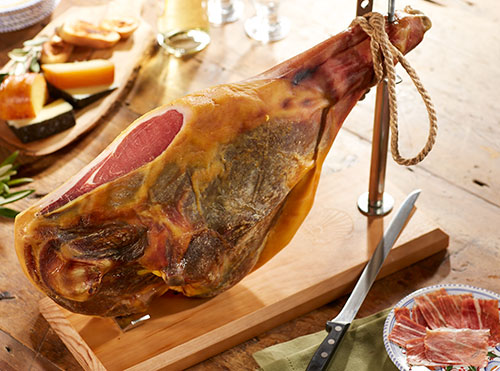
Today was a step up – Clive & Allan from the ‘The cave of dreams’ and Blog ‘The Big Adventure’ organised for a group of us to go into a Jámon factory ‘Jamones Grandinos’ and learn how Serrano Jámons and Iberico Hams are produced. Here is a brief explanation of what the differences are between the two.
Now for the comedy value…We had to dress up…

We were shown round the factory where Pork hind legs and shoulders are ‘cured’ to become Jámon, a process the replicates the seasons of the year and the curing processes handed down over centuries from father to son, mother to daughter.

In the Altaplano we have the perfect conditions for such a process – cold winters due to the high altitude and baking summers. Each season is essential to creating the Jámons unique flavour – the winter to start the process, salt and cold protecting the meat, the summers to create the enzymes that change the structure and flavour.

The absolutely perfect location is the famous Séron, which is where this particular business was started in 1946 by the current MD’s Grandfather.

Jamones Granadonis moved from Séron due to the improved communications of being based in Baza. In its 85 year existence it has gone from a small team of butchers taking spare pigs off local farms and reprocessing them into Jámon, to today taking the same product, on a larger scale, and sent across the world.

The back legs and shoulders are sourced from around Europe and brought into the factory to be assessed and prepared for processing. Once processed they labelled product is taken to a salting area where each leg or shoulder is salted based on their fat content and size. Each individual piece of meat is then marked and monitored throughout the factory to mazimise its potential.

The rear legs have more meat and fat, and less bones. That makes them more suitable for ‘Gran Reserva’, which means holding on to the meat for longer to enrich the Jámon.This process dates back hundreds, if not thousands of years in an annual event called Metanza.

Back in the day, and it still happens on family farms every January, the pig or pigs were butchered during Metanza. The whole family would come together to help butcher and preserve the meat to feed the family for the rest of the year. Legs would be turned into Jámon, other meat produces Morcilla, Chorizo, and many other cuts preserved and saved for a variety of dishes throughout the year.
I have experienced this at first hand. One of my neighbours and about twenty of his family all descended on the farm for the weekend, and watched the process from the slaughter to the chorizo. It was an incredible experience, but probably at the tip of my comfort level. Some moments, like the big boozy lunches all sat round a pan of ‘Miga’, sharing the food in a circle and passing the wine round from a ‘Porron’, were great. Flushing the intestines in the river, not so great.


But back to the tour – to replicate what happens on the farm, the salted meat is chilled in huge refrigerated rooms and stored depending on the individual size and weight and fat content of each leg or shoulder.


So the majority of the factory is handed over to storage – 300,000 legs and shoulders stored from anywhere from ten months to thirty months, depending on the quality of the meat, and its fat content.

The main two types of meat are the Serrano and the Iberico, or Pata Negra, (black foot), then you have the back legs and shoulder cuts. Then, depending on where the meat is going to, each local culture might demand that the meat is presented in a different way – Canadians prefer to have the Trotters removed, in Spain they do not bother – for instance.

For those who cannot managed a whole leg, then individual cuts can be provided for slicing, already de-boned by a skillful team of de-boners. Once the Jámons are ready they are then packaged and sent off.
At Jamones Grandinos they have their own shop – which means you can order directly. or just visit them yourselves. There they offer a wide variety of cuts to suit all your tastes – from pieces of Jámon, to legs, to shoulders from Serrano to Iberico.

We ended our tour with a little tasting session which was great – the Jámon we tried was their Gran Reserva – which effectively means the meat had been cured for longer due to its high meat and fat content being able to sustain the longer curing process – it just melted in your mouth – gorgeous!


This is a time consuming process and not cheap, but you do get what you pay for. So called Jámons can be bought at Christmas from well known supermarkets for a fraction of the cost – but these are cuts of meat or whole legs that have been injected with enzymes, preservatives, colourings and antibiotics to replicate the real thing. I know which one I will be buying!
We all had a great time and again thank you to everyone at Jamones Grandinos, and a big thank you to Clive and Allen at The Big Adventure for organising it. The next visit will be teaching us how to cut our Jámon, so please let me know if you would like to join us.
If you like this Blog please let me know, any feedback is always gratefully received. If you want to read some of my other Blogs, click here, thank you.

